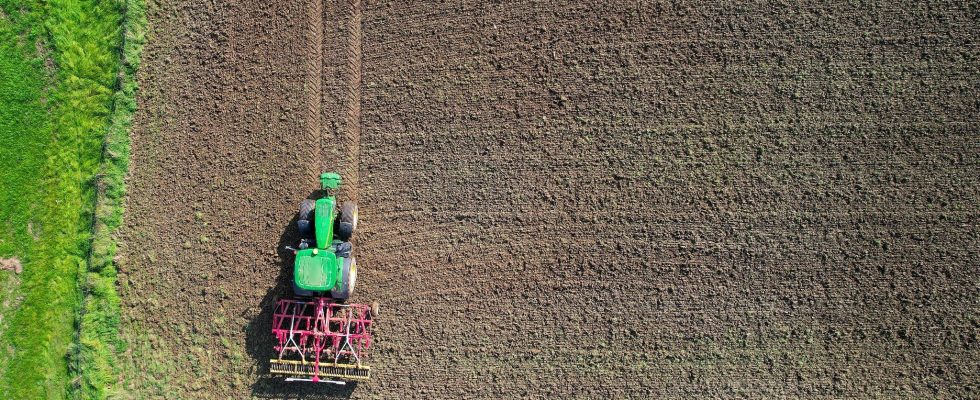One eye on the fields and the other on the European Parliament in Strasbourg. This week, the agricultural world will know whether or not Europe is following the path taken by America and part of Asia regarding genome editing of cultivated plants. The Old Continent seems well on its way to adopting – under conditions – new rules authorizing the placing on the market of plants having undergone targeted mutagenesis, that is to say a slight modification of their DNA, without the addition of external genetic material – as is the case for GMOs.
More precisely, new category 1 genomic techniques (NGT1), judged to have no negative impact on health and the environment because they could appear naturally or be produced by conventional selection, would escape the constraints weighing on GMOs. They would be registered in a database, and their seeds would be labeled. Conversely, category 2 NGTs, which include at least twenty gene modifications, would continue to be considered GMOs. Finally, no product from NGT could be labeled “organic”.
“This approach, if validated, would give Europe a framework close to that which already exists in many countries,” notes Rémi Bastien, president of the French Seed Manufacturers Union. Even if the section concerning NGT2 promises to be less permissive than in the United States. However, the Council of Ministers will also have to give its approval. However, the debate is far from being settled around these techniques which raise as many hopes as fears. In a recent report, rather favorable to the development of NGT, the Academy of Technologies highlights the complexity of the subject. “It is not easy to distinguish between those who want to ban everything, taking up anti-GMO arguments, and those who tend to embellish the possible effects of these new tools,” notes Bernard Chevassus-au-Louis , the pilot of this text. On paper, NGTs have a very broad field of application: improvement of crop yield, resistance of plants to high temperatures or herbicides, improved photosynthesis, etc.
“But in practice, not everything will be achievable,” warns Pierre Barret, research engineer at the National Research Institute for Agriculture, Food and the Environment (Inrae). Crop yield or plant tolerance to drought depends on many variables. Nothing says that we will be able to reproduce the promising results obtained in the laboratory in the fields. “Europe is undoubtedly not intended to develop species resistant to herbicides, these being intended rather for industrial agriculture. On the other hand, lasting resistance to diseases constitutes an interesting avenue of research, allowing us to remain in the framework of agroecology”, specifies the researcher.
Don’t miss the train
“The adaptation of our crops is not the only issue,” adds Georges Freyssinet, president of the French Association of Plant Biotechnologies. “It is also about our competitiveness in the long term. Several examples show that the differences in regulations between countries have a significant economic impact. For example, with the development outside Europe of insect-resistant genetically modified cotton, Spain and Greece are having great difficulties with their more traditional crops. By entering the EU, the Romania has given up on its herbicide-resistant GM soya and is now importing this legume. In France, genetically modified corn resistant to insects is not authorized while it is in Spain, which disadvantages French producers by compared to those located on the other side of the Pyrenees.
But despite these distortions, part of the agricultural world continues to look unfavorably on the NGT. This is the case of the Peasant Confederation, which denounces a lack of traceability and a risk of confiscation of seeds – via patents – by a few multinationals. “Traceability poses a certain number of challenges. There are no scientific tools to certify that a plant comes from NGT or not,” confirms Pierre Barret. There is also no system allowing, as for medicines, to be traced back to consumers in the event of a problem. Risk analyzes will be carried out before cultivation. “Let’s not forget that there are regulations concerning seeds which prevent anything from being put on the market,” recalls Georges Freyssinet.
“Economically, it is crucial that Europe learns the lesson from GMOs and that it looks very seriously at the issue of patents in order to avoid the formation of monopolies,” believes Bernard Chevassus-au-Louis. Corteva, a behemoth of the sector resulting from the merger of the world’s two largest agrochemical firms, Dow and DuPont, seems to have already won the battle. This company would already have a virtual exclusivity on the use of NGT for the development of new seeds. “It’s the bonus for the first entrant. However, there remains room, in the long term, for European players,” assures Rémi Bastien. As long as you act quickly. Abroad, the first products from NGT are already arriving in stores. In Japan, a tomato has beneficial effects on stress and sleep. In the United States, a salad that has lost its bitter taste or even fries without acrylamide, a carcinogenic substance that forms during cooking… “Are we going in the same direction? We have, in Europe, a social choice to make “, explains academician Bernard Chevassus-au-Louis. With one imperative: not to miss the train.
.
